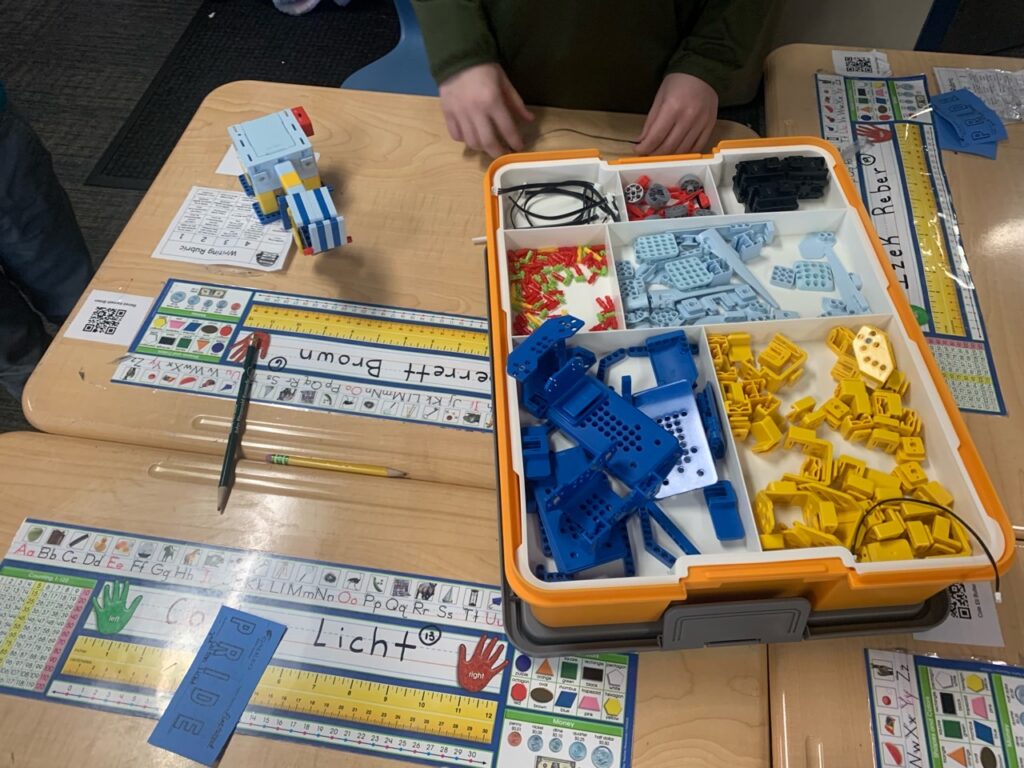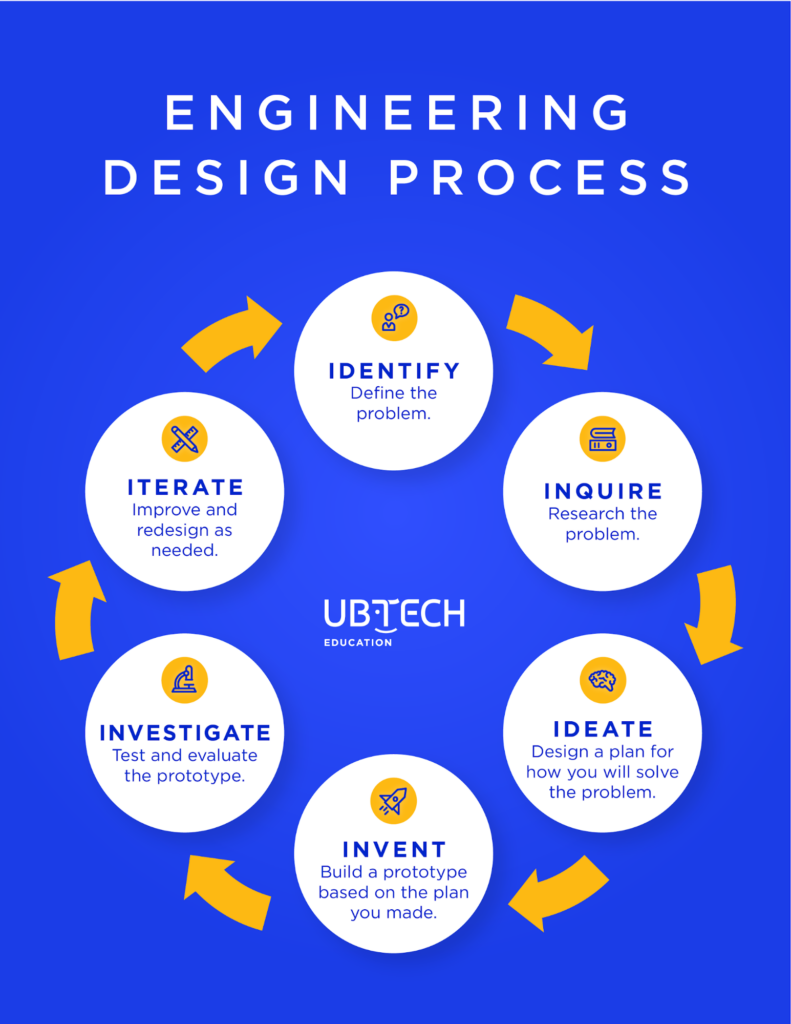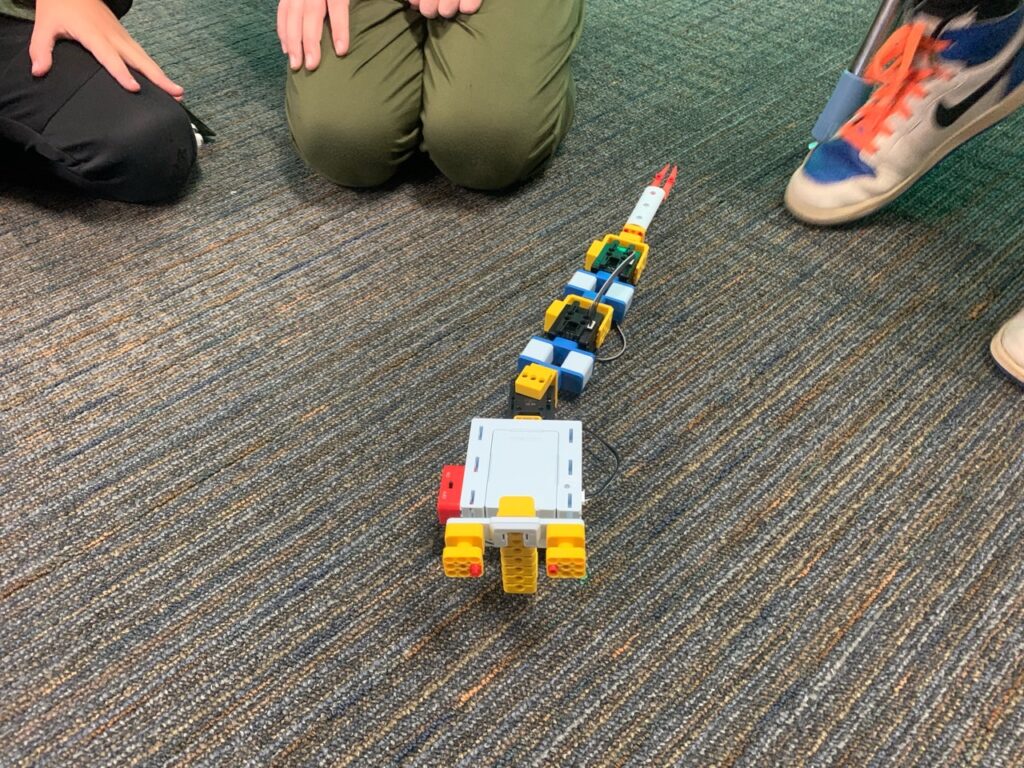Teacher Ambassador Program: UKITs in the Classroom – Gina Kwid
Introduction
Gina Kwid teaches second grade and elementary engineering at Galileo STEM Academy in Eagle, Idaho. She is passionate about STEM education and project based learning. As a Teacher Ambassador with UBTECH Education, she recently shared how she is using the UKITs with her students.

Gina’s Classroom: Creating Learning Opportunities with Robotics
I was first drawn to the UKITs for their building and coding applications and particularly how my students are able to follow instructions on the uKit EDU app. In my opinion, this app is appropriate for lower elementary students because of the picture driven instructions. My students are currently working with the UKITs to develop collaboration skills and project based learning applications.
In my classroom, we use the UKITs two times a week for one hour each session. During this time, students work in small groups with two to four students working on one kit with one device (for the app). This has really helped with collaboration and communication among my students.
During these sessions, I encourage my students to use the engineering design process across curriculum areas. My students first identify a problem, then research, plan, and design solutions to solve that problem. The students use the UKITs to build, test, and iterate their solutions before sharing with their classmates – which is also an important part of the process.

I use UKITs across several different subject areas and have aligned my UKIT lessons with federal, state, and district ELA, math, and science standards. Some example connections include:
- ELA – My students have used the UKITs for story starters where they write creative stories following building and coding of their robots.
- Science – We connected our studies of vertebrate and invertebrate animals in a science unit by building and coding the Snake robot in the Beginner UKIT.
- Math – My students have measured the distance the robots travel on a meter stick, calculated the number of cotton balls launched in one minute from the Golf Club robot, and recorded the time it takes the Snake robot to move one foot.
A big focus of mine this year has been to connect the UKITs with math instruction through developing learning targets and success criteria. My students are given challenges aligned with five math topics: addition, subtraction, time, measurement, and graphing. The students code their UKIT robots to complete math challenges relevant to these topics. Formative and summative assessments are implemented using meter sticks, grid mats, and clocks.
To gauge the success of my programs, I implement qualitative assessments through observation and interviews to determine student progress. The observations include class notes identifying the number of males and females, group metrics, successful or unsuccessful collaboration between students, and the number of successful robot builds. Interviews consist of asking students if they like or dislike building and coding the UKIT robots, what their favorite UKIT build is, and if their attitude towards robotics and coding has changed.
I find my approach unique because my elementary students are problem solving and coding the UKIT Beginner robots independently with minimal instruction from myself. I monitor the room and help answer questions but I am not giving them step-by-step directions. The students work at their own pace with classmates to successfully build and code the robots.

My students are engaged and I have seen their attitudes towards coding increase as well as their math skills increase as they have used the UKITs. They have had to problem solve, communicate, and think when the robot build does not run the code successfully the first time – which has helped them develop an engineering design approach to problem solving.
By incorporating UKITs in my classroom, I have learned that all students, regardless of academic levels, can successfully build and code robots and I have observed positive attitude changes towards coding and robotics. Students have also expanded their collaboration skills, problem solving skills, and become more thoughtful thinkers.
It is a pleasure to watch my students debug their robots to identify a problem, and collaboratively solve robotics and coding problems. My advice to educators is to try the UKITs with lower elementary students. Primary students can have great success building and coding robots with the UKITs.
———-
Gina is one of eight Teacher Ambassadors at UBTECH Education. Stay tuned for more interviews and perspectives from our Ambassadors.